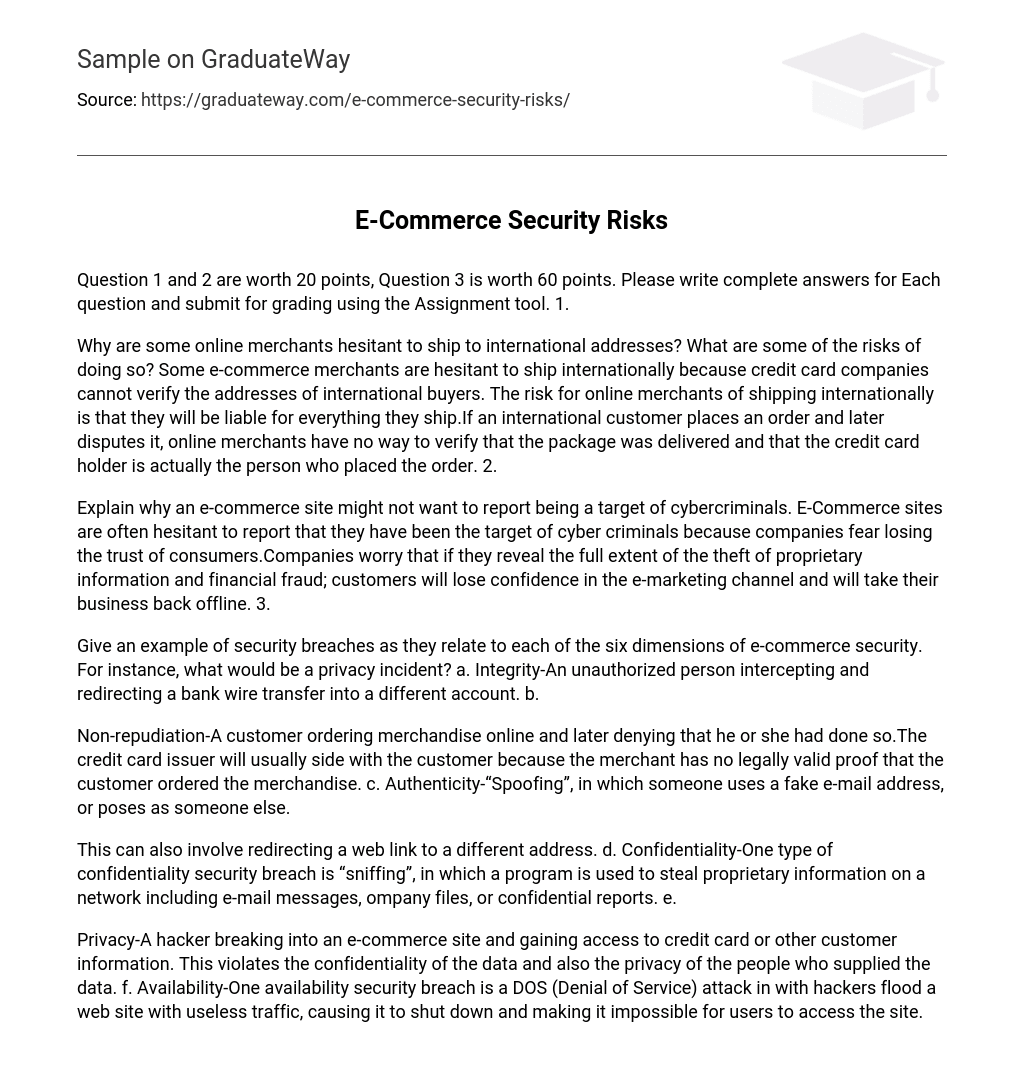Why are some online merchants hesitant to ship to international addresses? What are some of the risks of doing so? Some e-commerce merchants are hesitant to ship internationally because credit card companies cannot verify the addresses of international buyers. The risk for online merchants of shipping internationally is that they will be liable for everything they ship.If an international customer places an order and later disputes it, online merchants have no way to verify that the package was delivered and that the credit card holder is actually the person who placed the order. Explain why an e-commerce site might not want to report being a target of cybercriminals. E-Commerce sites are often hesitant to report that they have been the target of cyber criminals because companies fear losing the trust of consumers.Companies worry that if they reveal the full extent of the theft of proprietary information and financial fraud; customers will lose confidence in the e-marketing channel and will take their business back offline.
Give an example of security breaches as they relate to each of the six dimensions of e-commerce security. For instance, what would be a privacy incident? a. Integrity-An unauthorized person intercepting and redirecting a bank wire transfer into a different account. Non-repudiation-A customer ordering merchandise online and later denying that he or she had done so.The credit card issuer will usually side with the customer because the merchant has no legally valid proof that the customer ordered the merchandise. c. Authenticity-“Spoofing”, in which someone uses a fake e-mail address, or poses as someone else. This can also involve redirecting a web link to a different address. d. Confidentiality-One type of confidentiality security breach is “sniffing”, in which a program is used to steal proprietary information on a network including e-mail messages, ompany files, or confidential reports. Privacy-A hacker breaking into an e-commerce site and gaining access to credit card or other customer information. This violates the confidentiality of the data and also the privacy of the people who supplied the data. f. Availability-One availability security breach is a DOS (Denial of Service) attack in with hackers flood a web site with useless traffic, causing it to shut down and making it impossible for users to access the site.





